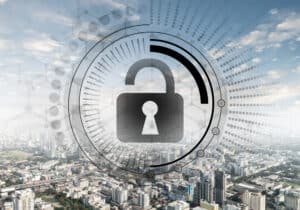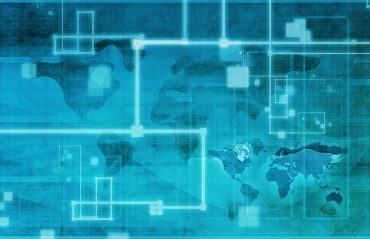
AI and ML are revolutionizing access management. AI-powered systems can rapidly analyze vast amounts of data, identifying patterns and anomalies that might signify a security threat. This allows for real-time threat detection and prevention, thus enhancing the overall security framework.
In today’s digital age, access management stands out as a fundamental pillar when implementing effective cybersecurity measures. It is an indispensable tool for cybersecurity experts, offering a formidable defense against unauthorized access and possible security incidents.
As we navigate a period of rapid technological change, it isn’t only our hardware and software undergoing shifts – the security challenges we encounter are also growing in intricacy and unpredictability.
The trajectory of access management isn’t just a topic of curiosity – it’s an important subject that every cybersecurity expert should be adept in. Modern security blueprints for businesses are continuously molded by the latest tech innovations, fresh legal frameworks, and rising threats.
By recognizing the dynamics pushing access management into the future, cybersecurity professionals can design optimal game plans to keep their organizations protected.
The Current Status of Access Management
When you analyze the current state of access management, it becomes clear that three key solutions stand at the forefront – Single Sign-On (SSO), Identity and Access Management (IAM), and Multi-Factor Authentication (MFA). Each plays a unique and critical role in fortifying digital environments against potential security threats.
Single Sign-On, commonly known as SSO, stands out as one of the most intuitive security measures available today. Its main purpose is to simplify the login procedure for users. By authenticating just once, users can access numerous applications and services without constantly inputting their details.
IAM systems represent a holistic approach to access management, encompassing SSO while integrating various other technologies. These may include user identity management, Privileged Access Management (PAM), and numerous Active Directory security measures.
Multi-Factor Authentication, often abbreviated as MFA, is another security solution that has solidified its position as a vital safeguard for organizations. MFA increases protection by mandating users to supply multiple verification methods before allowing entry. These verification means can include additional passwords, authentication codes from a mobile device, or a biometric scan like a digital fingerprint.
By implementing varied authentication steps, MFA dramatically curtails the chances of unauthorized entry, hardening a security framework.
Exploring the Latest Developments in Access Management
Recent advancements in access management have been characterized by the infusion of disruptive technologies and a heightened focus on regulatory compliance. Below, we’ll delve deeper into these notable progressions – specifically in Artificial Intelligence (AI) and Machine Learning (ML), blockchain technology application, and regulatory compliance.
Artificial Intelligence and Machine Learning
AI and ML are revolutionizing numerous sectors, and access management is no exception. AI-powered systems can rapidly analyze vast amounts of data, identifying patterns and anomalies that might signify a security threat. This allows for real-time threat detection and prevention, thus enhancing the overall security framework.
Machine learning is particularly valuable in creating adaptive security measures. It can learn from previous incidents and continuously refine its algorithms to predict and prevent future threats. For example, ML can analyze user behavior patterns to identify unusual activity, triggering additional security measures such as multi-factor authentication when necessary.
Blockchain
Another significant development in access management is the application of blockchain. Known for its role in cryptocurrency, blockchain provides a decentralized and non-reputable method for recording transactions. In the context of access management, blockchain can audit immutable digital identities, making unauthorized access nearly impossible to hide.
Every digital identity undergoes verification and gets recorded on the blockchain, establishing a clear and unalterable log.
The Role of Regulatory Compliance
In today’s globalized world, regulatory compliance has become a crucial aspect of access management. As more laws and regulations are enacted to protect consumer data, organizations must ensure their access management strategies are compliant.
Compliance goes beyond merely dodging fines – it’s crucial for preserving the trust of clients and key stakeholders. By setting up access control mechanisms that align with or surpass the criteria mentioned in various regulations, organizations showcase their commitment to privacy and safety.
The Impact of Hybrid and Remote Work on Cybersecurity
What is driving all of this work? Hybrid and remote work models are becoming increasingly prevalent as working environments evolve. While these flexible work arrangements offer numerous benefits, they also present new challenges for cybersecurity. Let’s delve into the impact of hybrid and remote work on cybersecurity and how organizations adapt to maintain robust security environments.
Expanded Attack Surface
With remote and hybrid work, employees often use their devices and home networks to access company resources. This network expansion beyond the traditional office boundaries increases the attack surface for potential cyber threats.
Personal devices often lack the comprehensive security features present in company-owned hardware, and domestic networks usually don’t meet corporate environment security standards. These conditions can increase cyber offenders’ chances of finding weak points and accessing confidential information without permission.
Increased Risk of Phishing and Social Engineering Attacks
Remote working conditions can heighten the risk of phishing and social engineering schemes. Cybercriminals frequently exploit the reality that remote employees might not be as closely connected with their peers and managers as they would be in an on-site office setting.
Because of this fact, employees might be more susceptible to falling for fraudulent emails or messages that appear to be from a trusted source.
Data Privacy and Compliance Challenges
Hybrid and remote work environments also raise concerns about data privacy and compliance. With employees accessing sensitive data from various locations and potentially storing it on personal devices, ensuring that data privacy regulations are adhered to can be challenging.
Furthermore, different jurisdictions may have different data protection laws, complicating compliance efforts for organizations with a globally dispersed workforce.
Adapting Cybersecurity Strategies
Faced with these security hurdles, companies are rolling out multiple proactive measures. One tactic is adopting a zero-trust security framework, which assumes that every access point in corporate resources could potentially come from a risky source.
Under this framework, rigorous identity checks are mandated for anyone or any device aiming to tap into resources on a private network, irrespective of their position relative to the network’s boundary.
Businesses are also turning to Virtual Private Networks (VPNs), multi-factor authentication, and Remote Desktop Protocol (RDP) tools to harden their defenses.
See also: Cybersecurity Will Shift in 2023 Thanks to AI
Enhancing Cyber Security Teams Through Training and Development
Technology alone is not enough. Considering the intricate nature of today’s cybersecurity challenges, it’s imperative for companies to offer continuous training and growth avenues for their teams. Doing so ensures they have the expertise to tackle the shifting threat landscape and maintain a safe business environment.
Cyber threats are continually evolving, becoming more sophisticated and harder to detect. Cybersecurity professionals must stay abreast of the latest developments, strategies, and technologies to counteract these threats effectively. This necessitates a culture of continuous learning within the cybersecurity team.
Training programs should be regularly updated to include recent trends and threat vectors. This ensures cybersecurity teams have the most effective tools and techniques to defend against current and emerging threats. Of course, frequent cybersecurity training for all employees is also a best practice.
Role-Specific Training
A one-size-fits-all approach to training is unlikely to yield optimal results. Instead, role-specific training programs can provide more targeted and relevant knowledge, enhancing each team member’s effectiveness in their specific role within the cybersecurity framework. For instance, those involved in access management may require training in advanced authentication methods, while those in incident response might benefit from in-depth training in digital forensics and threat mitigation.
Simulated Cyber Attacks
One of the most effective training methods for cybersecurity teams is using simulated cyber-attacks, also known as red teaming. These exercises mimic real-world cyber attacks, testing the team’s ability to respond effectively under pressure. They offer valuable insights into potential vulnerabilities and enable teams to refine their strategies based on practical experience. Another technique is using purple teaming, where both the red team and blue team work together at the same time, improving security as risks are identified.
Regular Assessments and Feedback
Continuous assessment and feedback are crucial to gauge the effectiveness of training and development programs. Regular evaluations help identify areas of strength and those requiring further attention. Constructive feedback encourages ongoing improvement and helps align individual performance with the overall goals of the cybersecurity team.
Training and development are pivotal in enhancing cybersecurity teams. By fostering a culture of continuous learning, providing role-specific training, conducting simulated cyber-attacks, offering professional development opportunities, and implementing regular assessments and feedback, organizations can build highly skilled, adaptable, and resilient cybersecurity teams ready to tackle the next generation of access management challenges.
Advantages of Passwordless Authentication
Password-free authentication is a promising and effective solution as we navigate an increasingly digital world with growing security concerns. This novel security measure could significantly shape the future of cybersecurity by moving passwords into the background.
Password-free authentication offers several advantages, enhancing both security protocols and user interaction:
- Increased Security: Traditional passwords are susceptible to phishing, brute force attacks, or simple guessing. By using more secure alternatives like biometrics or hardware tokens, password-free authentication mitigates these risks.
- Better User Experience: The burden of remembering numerous intricate passwords is eliminated, allowing users to access systems and data more seamlessly and efficiently. This not only enhances user satisfaction but also boosts productivity.
- Decreased Operational Costs: A significant amount of IT resources are spent on password resets. Organizations can lower these operational expenses by transitioning to a password-free system, enabling IT teams to concentrate on more strategic initiatives.
By eliminating the need to remember and use passwords, password-free authentication fortifies security by removing one of the most vulnerable elements in most security frameworks. As users are no longer required to remember or input passwords, the threat of password-associated breaches drastically reduces.
Enhance Security by Leveraging Access Management
Utilizing a robust access management system is crucial to an all-encompassing security strategy. Organizations committed to protecting their systems and data need to adopt authentication processes that meet existing and future security requirements. By implementing these measures, they can enhance their security framework and minimize the likelihood of data breaches.





























